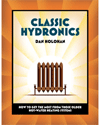Industry Members Withdraw From 13 SEER Challenge
ARI said in a statement it withdrew pursuit “due to the likelihood of a long and uncertain legal process.” It wants manufacturers to have time to prepare for the 13 SEER standard, which goes into effect in January 2006. “The industry needs to know with certainty what the standard will be in order to meet the needs of the marketplace,” said ARI President William G. Sutton.
The Department of Energy first ruled in January 2001 to instate the 13 SEER standard, which would increase energy efficiency by 30%. In May of 2002, Congress passed an amendment to lower the standard to 12 SEER, a 20% energy-efficiency increase. This was brought before the 2nd U.S. Circuit Court of Appeals, which ruled in January that the 12 SEER standard would not be implemented because the amendment did not follow proper procedural grounds.
Carrier had originally joined in disputing the standard, but Geraud Darnis, Carrier's president, said that a further challenge of 13 SEER could revert it back to 10 SEER. “Given the choice between 10 SEER or 13 SEER, we think the industry should support the higher efficiency,” he said.
American Standard, manufacturer of heating and air conditioning systems under the American Standard® and Trane® names, said it also supports 13 SEER, according to Lisa Glover, spokesperson. “We think the new residential standard is good for the environment and it's going to produce energy savings for our country.”
Looking for a reprint of this article?
From high-res PDFs to custom plaques, order your copy today!






